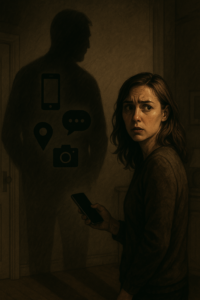This week, actress Olivia Munn shared an Instagram post in which she revealed that she was diagnosed with breast cancer in early 2023. She said that although she had tested negative for mutated BRCA genes (which are associated with a higher risk of breast cancer) and had a “normal mammogram” that winter, her doctor decided to calculate her breast cancer risk assessment score. “The fact that she did saved my life,” Munn wrote. Breast cancer risk assessment tools take into account a patient’s medical, family and reproductive history in order to calculate the likelihood that they will develop breast cancer in the next five years, or their overall lifetime risk. According to Munn, her lifetime risk was calculated at 37%. So what are these tests? How do they work and who should take them and when? We asked experts. What is a breast cancer risk assessment? “A breast cancer risk assessment tool is one way that healthcare providers can estimate whether a woman has an increased chance of developing breast cancer,” explains Beth Peshkin, professor of oncology and certified genetic counselor at the Georgetown Lombardi Comprehensive Care Center. The tools assess genetic factors such as a person’s family history of cancer, as well as non-genetic factors like their age, how old they were when they got their first period, how old they were the first time they gave birth and whether they’ve had previous breast biopsies. One commonly used assessment tool, the Gail model, is available to take for free on the National Cancer Institute website, and can be completed in under 5 minutes. The Gail model then calculates a person’s five-year risk of developing breast cancer, as well as their lifetime risk, and compares them with the average risk for women of the same age and race or ethnicity. While the Gail model is fast and easy, more detailed tools are helpful for a more accurate assessment, says Dr Robert Smith, a cancer epidemiologist and senior vice president of Early Cancer Detection Science for the American Cancer Society. He says the Gail model is useful for indicating if the “risk is high enough, and your family history suggests that we need to pull out some more powerful assessment tools”. The National Cancer Institute (NCI) also recommends more detailed tools like the IBIS Breast Cancer Evaluation Tool (also known as the Tyrer-Cuzik Risk Assessment Calculator) or the Boadicea model, which can also be taken online. Both of these take into account factors like a person’s height and weight, and require a more extensive family history. What does a breast cancer risk assessment score mean? While a breast cancer risk assessment score can be helpful, experts emphasize that it’s just a first step. “If a person has a higher-than-average risk on a screening tool, the next step is to talk to a healthcare provider to determine the next steps,” says Peshkin. These might include heightened breast cancer screening procedures, like a breast MRI, or chemoprevention – the use of certain drugs like Tamoxifen to reduce one’s cancer risk. In some cases, genetic testing might be recommended, but Peshkin recommends that patients talk to a genetic counselor to determine the potential benefits, limitations and risks of such testing. Smith points out that there are certain risk factors that can better be assessed by a healthcare provider than by an online tool, like a person’s breast density. “Significant breast density can be associated with a higher risk of not being able to detect breast cancer just because you can’t see it [on a mammogram],” he says, adding that for some women, higher breast density is also a marker of increased risk. What are the limits of breast cancer risk assessment tools? There are several limitations to breast cancer assessment tools. The Gail model, for example, was originally developed using data from the Breast Cancer Detection Demonstration Project, a breast cancer screening study that examined 280,000 white women. Data was later added from other studies that looked at the risks for Black, AAPI and Hispanic women. But as the NCI’s website notes, while the model has since been tested on a variety of populations, “it performed well but may underestimate risk in Black/African American women with previous biopsies and Hispanic women born outside the United States”. Additionally, Peshkin suggests that these models “may not be sufficient to identify individuals who may still benefit from genetic testing, including individuals who have already had cancer”. Smith adds that “it is not a useful tool if you have a significant family history of breast cancer”. Who should do a breast cancer risk assessment? “It’s reasonable for all adult women to know their breast cancer risk and be aware that this risk will change as they age and their risk profile changes,” says Peshkin. Smith says that “it doesn’t hurt” to do a breast cancer risk assessment test online. But he urges those who are concerned about their results to follow up with a professional. “You have to talk with your doctor about these results to really make sense of them.” When should you get breast cancer screenings? Breast cancer screenings involve checking a patient’s breast for cancer. Depending on the patient and their individual history, physiology and needs, this may involve a clinical breast exam, where a practitioner uses their hands to feel for lumps, a mammogram and/or a breast MRI. Guidelines for breast cancer screenings are in the process of shifting. Previous recommendations from the US Preventive Services Task Force (USPSTF) – the group tasked with determining these guidelines – stated that women who are 50 to 74 and at an average risk for breast cancer should get a mammogram every two years, and women between 40 and 49 should talk to their doctor or healthcare provider about when to start getting mammograms, and how often. But in 2023, the USPSTF announced a new draft recommendation which recommended women get screened for breast cancer every other year starting at age 40. “We have long known that screening for breast cancer saves lives, and the science now supports all women getting screened, every other year, starting at age 40,” the group’s draft recommendation reads. In the UK, anyone registered with a general practitioner as female will be invited for an NHS breast screening every 3 years between the ages of 50 and 71.
This content was originally published here.




